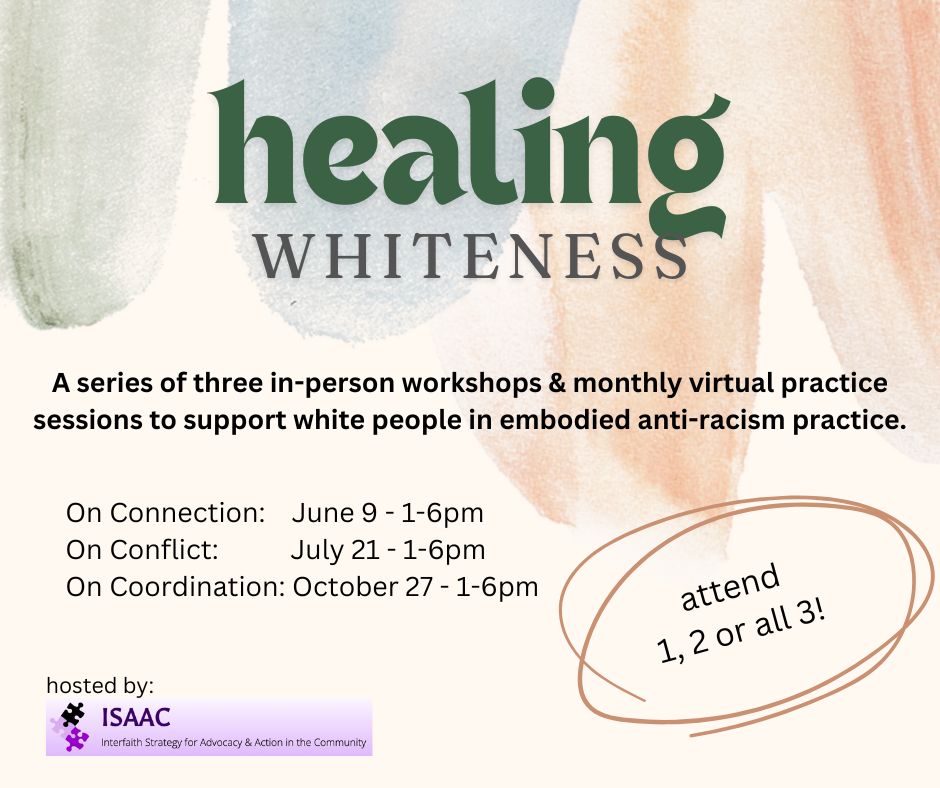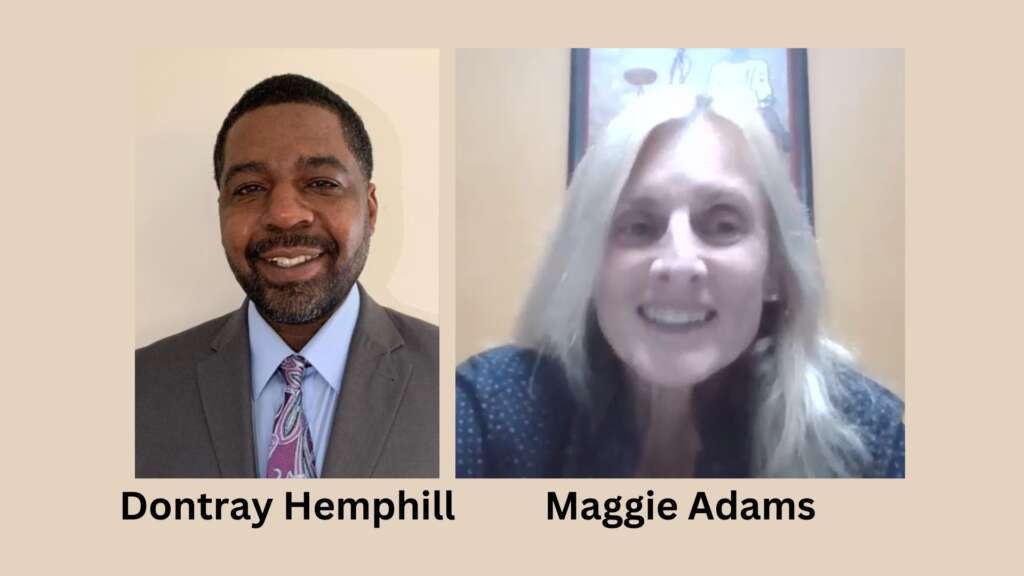Kalamazoo’s Group Violence Intervention has many myths that we as a GVI Team would like to dispel tonight.
Wendy Flora: Myth #1 – GVI was brought to Kalamazoo by Law Enforcement
Actually, GVI was brought to Kalamazoo as a part of ISAAC’s 2011 Holy Ground Campaign listening sessions in our neighborhoods where community members voiced concerns about the impact of violence in Kalamazoo. After a devastating summer of homicides and a rise in shootings, community members shared being tired of the loss. Loss of shooting victim’s life on earth and loss of the shooter’s life to prison, as well as the lasting trauma gun violence brought to our community. In 2012 after more research and seeing this was a more equitable way to reduce violence, while understanding societal barriers that can impede and impact life chances and success, ISAAC brought Prof. David Kennedy to Kalamazoo as a keynote speaker. He said we had a city that was already engaging in some collaborative communications and partnerships which would help in implementing this initiative. ISAAC connected with other partners to start discussions of implementation. Please stand as I call your organization: Currently ISAAC, Northside Ministerial Alliance, Urban Alliance, Kalamazoo Dept. of Public Safety, the City of Kalamazoo, Parole and Probation, Prosecutor’s Office, and the US attorney’s office.
Myth #2 – The focus of GVI is to profile and lock up people of color in prison
Michael Wilder: The GVI model is holistic: community, law enforcement and social services working together in support of reducing violence, addressing societal barriers and collectively supporting all community members. We are very grateful that our Chief and Law Enforcement have agreed that the way they were taught to do enforcement was not effective and they are committed and willing to doing things differently to help build and mend relationships within the community: Community Policing. This is a strategy that acknowledges that there are societal obstacles surrounding community members of color, community members living in poverty and community members reentering society after being incarcerated. Urban Alliance is GVI’s lead social services agency whose mission is that all people have intrinsic value and through relationships, education, hands on training, empowerment and love. Urban Alliance is a place where those in our underserved communities are embraced, engaged and empowered.
Nationwide and everywhere communities of color still have trust concerns with law enforcement and there is a need for open and honest communication and healing around race. GVI Community Partners (NMA and ISAAC) including our Law Enforcement are working to mend those fractured bridges and help facilitate discussions around race and healing between law enforcement and community members. For the past 3 years we have seen this strategy bring community members, Street Outreach Workers, Law Enforcement, Clergy, and social services together with a strong family-like bond having difficult conversations. We cannot do this without each other.
Myth #3 – When there is a shooting GVI has failed
Michael Wilder: GVI focuses on group involved shootings, and focuses on the small segment of the population — generally less than .5% — that is responsible for more than 50% of the gun violence. Not all shootings are group involved some are domestic or related to other aspects. There are many complications with a shooting such as community members being afraid to come forward with information. Witnesses and victims may not want to turn someone in for fear or not wanting to be a snitch, which may hinder the investigation.
Myth #4 – GVI is a national model that cannot be changed
Michael Wilder: GVI is a national model that has proven to reduce violence in large cities. Cities often see a significant impact on the level of homicides and nonfatal shootings citywide. However, we are a smaller city that is unique, so we are using core principles and making this work for our own community. We have and will continue to engage in equity and healing workshops and sessions, as we continue to learn, to evolve and to receive feedback from community to ensure this strategy has no unintended consequences and that our institutions and practices are progressing to be rooted in equity. As a collaboration, the goal can be expanded, to not only reducing violence and keeping our community members out of prison; but also helping to remove barriers so that all individuals can live their best purpose-filled life. What cultural competency teaches us is, if done correctly, outcomes & communication are improved, trust is strengthened, and institutional policies & practices can be transformed. And remember…
All together:
We cannot do this without each other.
 ISAAC
ISAAC









 Ed Genesis is an artist, poet, musician, organizer, entrepreneur, and community leader. Born and raised in Gary, Indiana and moved to Kalamazoo, Michigan permanently in his early 20’s, his love of art/music, his passion for his people and community, and his gift of creativity are evident in all areas of his work. In October 2018 Ed Genesis released a song to accompany the campaign he was working on around school push out, entitled Junior High, which was distributed nationwide including on his own iHeart radio station, Spotify, and iTunes.
Ed Genesis is an artist, poet, musician, organizer, entrepreneur, and community leader. Born and raised in Gary, Indiana and moved to Kalamazoo, Michigan permanently in his early 20’s, his love of art/music, his passion for his people and community, and his gift of creativity are evident in all areas of his work. In October 2018 Ed Genesis released a song to accompany the campaign he was working on around school push out, entitled Junior High, which was distributed nationwide including on his own iHeart radio station, Spotify, and iTunes.